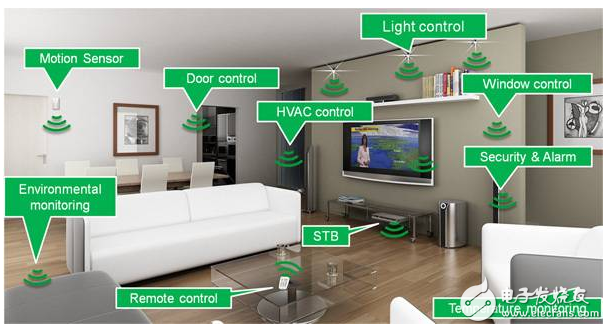
资料下载

优化ZigBee无线电性能和能源使用的技巧
优化ZigBee无线电性能和能源使用的技巧
ZigBee收发器是一种流行的,在某些情况下,不可或缺的元素,现代能源管理和楼宇自动化系统(图1)。然而,并非所有的ZigBee系统都是平等的,它们的性能和电池寿命的差异可能意味着产品的成功或失败。电源/性能优化设计需要仔细选择主机系统和无线电系统组件,但即使是最好的参考设计也需要工程师的触摸来对特定应用程序进行微调。正如我们不久将看到的,设计问题,如无线电功率管理、天线分集、出站数据和入站数据的智能管理,以及对系统休眠模式的仔细关注,都在设计健壮、长寿命的能量管理设备中起到了作用。

Figure 1: ZigBee wireless technology’s robust, low-power characteristics have won it wide acceptance in environmental monitoring, energy management, lighting control, and building automation applications.
Design for performance
Although all commercially-available ZigBee transceivers are compliant with the standard’s simple, well-defined air interface, a system’s actual performance (i.e. how closely it matches the data rate, range, and resistance to interference of a so-called ideal system) is still dependent on the designer’s skills. Many issues involve the radio subsystem, including receiver sensitivity, transmit power, and its ability to cope with the interference, fading, and multipath conditions found in most real-world environments. These factors affect a system’s range, data rate, and how much of its theoretical capacity is consumed by dropped packets or other transmission errors. Any re-transmission of lost or garbled packets impacts the overall performance and efficiency of the communication network in terms of latency, power consumption, and increased radio activity that creates additional channel interference.
声明:本文内容及配图由入驻作者撰写或者入驻合作网站授权转载。文章观点仅代表作者本人,不代表电子发烧友网立场。文章及其配图仅供工程师学习之用,如有内容侵权或者其他违规问题,请联系本站处理。 举报投诉
- 相关下载
- 相关文章





